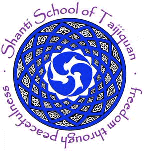WELCOME
- SUSAN A MATTHEWS HOME
- SHANTI SCHOOL HOME PAGE
- STUDY GUIDE
- SPIRAL ANATOMY™
- BRAIN WORKSHOP™ TRAINING
- GEORGE XU HOME PAGE
- CONTACT US
Website
Design: Susan Matthews
© 2003-2025
all rights reserved
No part of this website may be reproduced without expressed permission.
Subtle Energy Body in Tai
Chi & Qigong 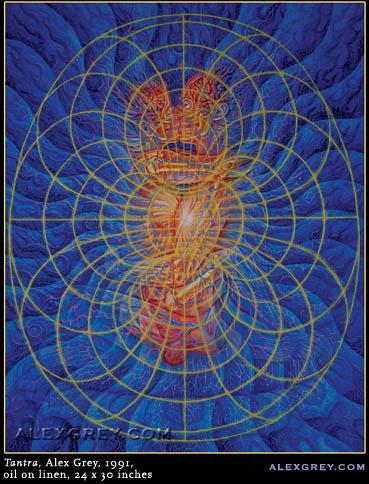
Guide to navagating these pages
Practicing Advanced Mind-Energy-Physical Integration in Tai Chi and Qigong
Tai
chi and Qigong have many forms of energy practices both still and within movement. Our goal is to immediately sense and respond in harmony with the energy of the moment. Practicing the art of being present in the moment, living through your subtle energy body is embodying tai chi all the time. The following visualization creates a dynamic core that contains fluid movement, falling in gravity, and playing the qi in such a way that it establishes a direct connection between physical being and spiritual power in higher consciousness.
The Spiral Anatomy™ Training Course contains an extremely robust visualization and meditation program that can bring a high level
of conscious awareness of the energy in and surrounding one’s body.
Practice Visualization for Sensing Energy in the Body Centers
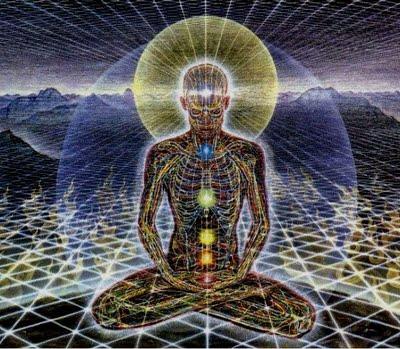 Create a detailed visualization of the subtle energy centers body in the lower, middle and upper dantiens. You will build a strong sense of the center as a ball and later experience using it for strength and power. This is a daily practice to expand and build and experience this energy over time. With time and/or with a ‘change of mind focus’ this perception of energy is expanded into the space surrounding the physical body. Using imagery and intent we can reach towards an expanded wisdom self. Energy is clarity as it connects us to this higher energy or spiritual self. Ultimately, stepping into the energy of the greater self allows us to see patterns in behavior in relationships of all kinds and allows us to choose results that increase energy within relationships. When one understands energy, energy becomes the guiding force and the guiding priority.
Create a detailed visualization of the subtle energy centers body in the lower, middle and upper dantiens. You will build a strong sense of the center as a ball and later experience using it for strength and power. This is a daily practice to expand and build and experience this energy over time. With time and/or with a ‘change of mind focus’ this perception of energy is expanded into the space surrounding the physical body. Using imagery and intent we can reach towards an expanded wisdom self. Energy is clarity as it connects us to this higher energy or spiritual self. Ultimately, stepping into the energy of the greater self allows us to see patterns in behavior in relationships of all kinds and allows us to choose results that increase energy within relationships. When one understands energy, energy becomes the guiding force and the guiding priority.
Chinese internal martial arts are unique in how energy is developed and used. Most mind-energy-spirit or subtle energy body practices are essentially mind practices with physical body minimally involved. Chinese internal martial arts have advanced practices that train the mind or yi, to build sense and move the energy or qi, then use the qi to move the physical or li. Once a person can feel this energy in the body they can make it stronger. Along with this strong energy comes health and mental stability.
Energy has been described in eastern traditions as chakras (Indian, Tibetan) or dantien (Chinese) energy centers. The centers are described as a spinning, radiating locus of energy along a vertical central axis (zhong ding). Sitting meditation and certain practices can awaken this energy to higher states of consciousness. (artist Alex Gray, see more visuals)
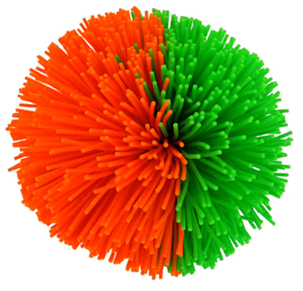 What is unique to Chinese internal martial arts is how the energy is used in movement. Unique to this training, as well, is how a starburst energy shape and backwards bicycle rotational movement can be combined to produce energetic movement. This second aspect is the contribution of this author to the movement sciences.
What is unique to Chinese internal martial arts is how the energy is used in movement. Unique to this training, as well, is how a starburst energy shape and backwards bicycle rotational movement can be combined to produce energetic movement. This second aspect is the contribution of this author to the movement sciences.
The energy picture we construct resembles a ball or burst of infinite rays of light radiating from points centered in the chakras or more simply, in the Chinese internal arts, as upper, middle and lower dantiens (chakras 1-2, heart, head). While still and moving, each center is visualized in a state of bamen and the whole together as bamen wu bu. Bamen wu bu is the strong presence or volume of projected energy in the eight directions, up, down, left, right, front, back; essentially a round ball. By definition, tai chi and other Chinese internal martial arts include training the mind to use these energy centers and the flow of energy as a source of physical power. An excellent lecture on bamen wu bu was filmed at China Camp 2004 by Wang Zhi Xiang a student of Grandmaster Wang Hao Da.
Cultivate Zhong-Ding Central Equilibrium Line
The visualization of the subtle energy centers is along the central equilibrium line (zhong ding). With practice we create a dynamic and fluid spine.
Zhong ding is one of the thirteen basic or kinetic movements of tuishou in tai chi described in Wu Style Taichichuan Push Hands by Ma Yeuh-liang and Zee Wen. "Of the thirteen kinetic movements [the four straight directions- peng lu, ji, an, and the four diagonal directions tsai, li, shou, kao, are eight directions connected with the bagua; jin, tui, ku and pan are stepping and looking movements] zhong ding, the strength of central equilibrium is the most basic and essential skill of taijiquan. It is the concealed strength. According to the five elements theory, shong ding belongs to the earth. Zhong ding is located in the center and gives birth to all living things. Zhong ding is the governing principle in the thirteen kinetic movements in taichichuan, and the other twelve kinetic movements are subordinate. Without zhong ding the alternative variations of void and solid do not exist. Whenever there is void and solid, there is also zhong ding. None of the kinetic movements are ever dissociated from zhong ding. All forms or methods are based on zhong ding. As in mechanics, zhong ding is to stabilize the center of gravity, and to balance the momentum. When standing, it is like a balanced scale."
Spiral Anatomy™ Module 2 presents the details of zhong ding and how important it is for brain and balance.
"Yin-yang in taichichuan represents the fundamental theory of void and solid in practical maneuvers, the strategy in tuishou is based on changes of yin (the negative) and yang (the positive) alternately. The thirteen kinetic postures are not solitary or isolated movements. They are changes of yin-yang and are manifested continuously in circular movements."
Separate Yin-Yang Along the Centerline
Separation of Yin-Yang along the centerline into right-left, front-back, in-out, and up-down has several benefits that combine to create a fluid center and release a stiff core.
Up-down separation of yin-yang along the centerline loosens and stretches the spine. Energetic fire rises up, is light, empty, loose and alive. Energetic water sinks down, maintains a dynamic root, and generates the fire up.
Left-right yin-yang is required for a flexible spine and loose-open shoulders. Left-right also is required for perfect balance. Yielding, or yin action, must create the corresponding yang force in order to remain light, to be comfortable, undisturbed and in control of your center.
Front-back balance keeps the spine vertical and upright. Front-back separates the energy so that in partnership a common center is experienced as a heart-mind connection.
In-out separation focuses on awareness of the space and also allows a beautiful heart-mind connection.
The video Set by Master George Xu titled Universal Principle of Yin-Yang in the Practice of Taiji, Bagua and Xing-Yi is dedicated to describing applications of this universal principle.
Practice Spiral Power Stretching
Spiral power stretching creates a violin-string tone connecting the arms and legs to the centerline. These exercises create a body that is one unit and therefore acts with the power and strength as one unit. Secondly, as one spiraling unit, hands and feet and body spiral together, what happens at the hands is transmitted to the feet and vice versa through the centerline.
You can incorporate these internal skills for exquisite fluidity and lightness in tai chi, push hands, golf, dance, skiing, running, board sports...
Anyone experiencing chronic shoulder, arm or back pain, or upper-body tension and stiffness will gain understanding of the biomechanics of the shoulder as it relates to the spine and will learn how to use relaxation to release these areas for increased range of motion and strength.
The power stretching web page presents the work of several Lan Shou Masters and the fundamentals of power stretching are presented in Spiral Anatomy™ Module 3. It is recommended that you start with this Module to get the background information Master Xu and other masters assume or do not talk about anymore.
Create Global Brain Action with Visualization
The brain can unify, it can create whole-body unified kinetics, and the action can unconsciously respond with strength according to the energy picture created by the mind. This is so powerful that even an untrained person can demonstrate mind power. The neuroscience behind this is just now beginning to be understood. It is known that if one watches or practices visualizing a movement, such as learning a skill like throwing a basketball, the physical skill improves without actual physical practice. Mental practice or mindfulness practices have gained favor recently in PTSD and other stress-related conditions.
Chinese internal martial arts take this a step further. Chinese internal does not just engage the mind to be calm or focused. In tai chi the mind does more than visualize physical movement. Instead, the mind engages the movement of energy to move the physical body. The mind is trained to move the qi and the physical body is trained to obey the qi. Actually great masters develop so much mind power that at the highest levels it looks like magic. The important thing here is that the mind power is demonstrated in physical power. What this does is take meditation and the practice of energy to a level where the energy is seated in the physical body, not just experienced as a mysterious force outside the self. So many energy practices today train the mind-energy but leave out concrete physical reality and thereby leave the physical body behind, even ones devoted to physical healing.
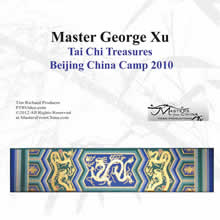 Master George Xu Tai Chi Treasures
Beijing China Camp 2010 video presents Master Xu’s exercises and theory presented over several sessions at the China Camp 2010 in Lan Fang near Beijing. Here, he focused on practicing and controlling ‘BIG’ energy of the space outside and around the fighter and opponent. Related to this is the integration of inside and outside forces, the internal and the space; for example, the mind is on the outside energy, not the internal snake. He separates hand/arm usage into levels: first, the mind is on the hand and the body moves the hand; second, internal energy moves the body that moves the hand all together; third, the internal energy body moves the hand; and fourth, the outside space moves the energy body.
Master George Xu Tai Chi Treasures
Beijing China Camp 2010 video presents Master Xu’s exercises and theory presented over several sessions at the China Camp 2010 in Lan Fang near Beijing. Here, he focused on practicing and controlling ‘BIG’ energy of the space outside and around the fighter and opponent. Related to this is the integration of inside and outside forces, the internal and the space; for example, the mind is on the outside energy, not the internal snake. He separates hand/arm usage into levels: first, the mind is on the hand and the body moves the hand; second, internal energy moves the body that moves the hand all together; third, the internal energy body moves the hand; and fourth, the outside space moves the energy body.
While internal martial arts fighting training is complex and requires time, there are simple ways to demonstrate not only the use of energy for movement, but the use of energy for physical strength. Starting with the bamen state created above we start practicing using energy to create superior balance and ground power, as well as to create resistance to forces in all directions. Partners can help each other learn to use mind-energy to transfer a great deal of force through the body into the ground. At the next level, the practice involves understanding how one’s personal energy levels are amplified in a good way (or not) in relationships. Viewing relationships in this way opens the door for a different set of choices; it teaches non-reactivity. Another great video with George is Superior Power From Indirect Invisible Force: Advanced Training on Vertical Force, Gravity, Internal Body Art, and Space.
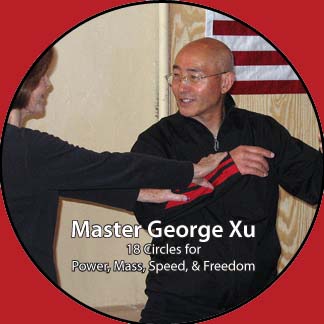 18
Circles for Power, Mass, Speed & Freedom: Advanced Training Exercises
for Martial Power with Master George Xu and the other two videos in this set are full of martial
applications and drills, currently in great demand among practitioners around the
world. Master Xu presents specific aspects of his predator theory in the
clearest language to date, emphasizing internal goals of maximum power,
weight, speed, and freedom. Master Xu's predator theory comes together like never before in this video,
making it more accessible to average practitioners, while also refining
our link to traditional Chinese internal martial arts practice. In this
latest of many video lessons that Master Xu has graciously contributed
to, he offers new insights not only into internal secrets, but also into
a whole system of knowledge.
18
Circles for Power, Mass, Speed & Freedom: Advanced Training Exercises
for Martial Power with Master George Xu and the other two videos in this set are full of martial
applications and drills, currently in great demand among practitioners around the
world. Master Xu presents specific aspects of his predator theory in the
clearest language to date, emphasizing internal goals of maximum power,
weight, speed, and freedom. Master Xu's predator theory comes together like never before in this video,
making it more accessible to average practitioners, while also refining
our link to traditional Chinese internal martial arts practice. In this
latest of many video lessons that Master Xu has graciously contributed
to, he offers new insights not only into internal secrets, but also into
a whole system of knowledge.
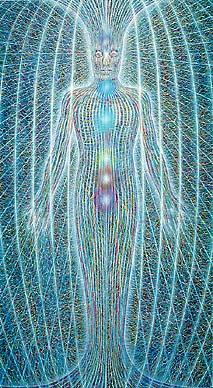

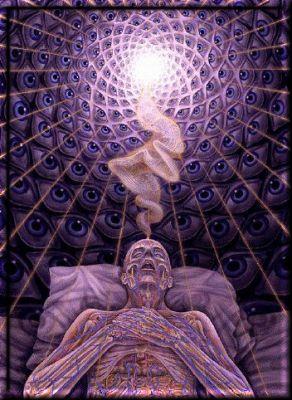
Amazing Alex Grey imagery: Life, tantra, death.
